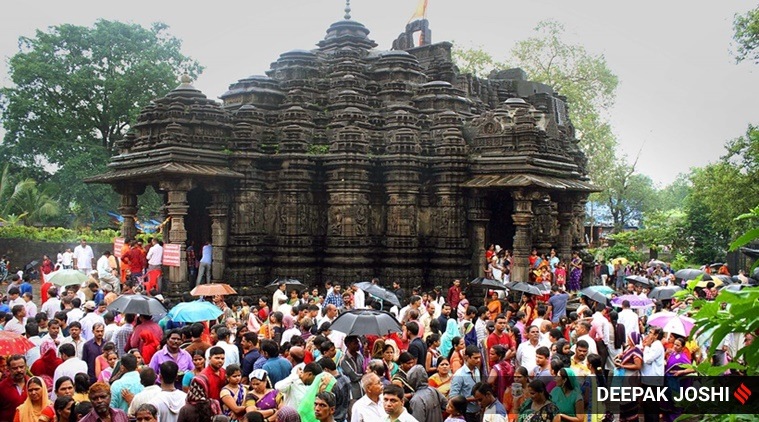Blog
Sawan 2020: time, date, shubh muhurat of Sawan 2020

By: Lifestyle Desk | New Delhi | Updated: July 6, 2020 11:51:37 am


Devotees offer prayers to Lord Shiva at the 1000-year-old Ambernath Shiv temple in Mumbai. (Express photo: Deepak Joshi)
Sawan Somvar 2020 Date, History, Significance, Puja Vidhi, Shubh Muhurat, Timings, and Mantra: The first showers of the monsoon season also mark the beginning of the month of Sawan as well as Chaturmas. This year, the holy month of Sawan or Shravan begins July 6 and will end August 3, as per the North Indian Purnimant calendar (a calendar in which a month ends with Purnima or full moon day). The end of Sawan is celebrated with festivals like Teej and Rakshabandhan in places like Punjab, Himachal Pradesh, Rajasthan, Uttarakhand, Uttar Pradesh, Bihar, Jharkhand, Madhya Pradesh and Chattisgarh.
Happy Sawan 2020: Wishes, images, quotes, status, messages, greetings, photos
However, as per the Amavasyant calendar (the Hindu calendar in which a month ends with Amavasya or the new moon day), the month of Shravan starts on July 23 and ends on August 19. It is followed by devotees in Gujarat, Maharashtra, Goa, Karnataka, Andhra Pradesh, Telangana and Tamil Nadu.
The important dates in Shravan as per Purnimant are:
July 6 – First Shravan Somwar (First Monday and the first day of Shravan)
July 13 – Second Shravan Somwar
July 20 – Third Shravan Somwar
July 27 – Fourth Shravan Somwar
August 3 – Fifth Shravan Somwar (last Somwar and the last day of the month)
As per the Amavasyant calendar, the important dates are:
July 21 – Shravan month begins
July 27 – First Shravan Somwar
August 3 – Second Shravan Somwar
August 10 – Third Shravan Somwar
August 17 – Fourth Shravan Somwar
August 19 – Shravan month ends
ALSO READ | Intermittent fasting: In a 24/7 food culture, periodic fasting gains followers
As per Hindu traditions, Shravan is the fifth month of the Hindu lunar calendar and is dedicated to Lord Shiva and Goddess Parvati. As per legend, Lord Shiva drank venom as part of the Samudra Manthan or the churning of the cosmic ocean to obtain amrit or nectar in order to save the world. Goddess Parvati is believed to have stopped the venom from entering his body by holding his neck. His neck turned blue and he further suffered pain and burns. As a gesture of gratitude, his devotees offer water from the river Ganga to help his wounds heal.
Devotees also fast on Mondays during the holy month which is known as Shravan Somvar Vrat. The fasts are kept as a way of thanking the lord as well as for success, marriage, and prosperity. Devotees observe fast and offer milk, water, and bilva leaves to the almighty. Some even, observe fasts on Tuesdays, which was known as ‘Mangala Gauri Vrat’.
Many Hindu festivals like Krishna Janmashtami, Raksha Bandhan, Naag Panchami, and Teej fall in the holy month of Sawan.
The Indian Express is now on Telegram. Click here to join our channel (@indianexpress) and stay updated with the latest headlines
For all the latest Lifestyle News, download Indian Express App.
© IE Online Media Services Pvt Ltd
